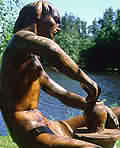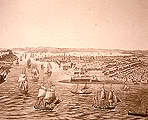|
The Cuban population is a melting pot of
ethnic mixes from every corner of the world. In the early
days slaves cross bread with masters creating the mulattos
of today. Later, people of Russian, Chinese and European
decent created the make up of today's Cuba. Nevertheless,
three dominant chief roots melt, giving shape to the Cuban
nation gradually making up the current ethnic society. First
of these roots is that of the aborigines inhabitants; their
ethnic contribution was reduced by the impact of the conquest
and colonisation process. It is for this reason that the
more significant roots in the Cuban nationality are Spanish
and African. The first was the result of migration from
the metropolis, which has been going on throughout our history
more or less regularly. During the first centuries, after
conquest, most groups came from Castile mainly from Southern
of Spain. Later, massive migration arrived from Canary Islands,
Galicia and Catalonia. More recently and during the last
century Eastern European and Chinese immigrants have further
enriched, what is, the unique racial mix that makes up Cuba
today.
The African
roots also left a very particular mark in the process of
the formation of Cuban culture. Coming, primarily, from
five different ethnic groups (yoruba, mandingas, congos,
carabalies, bantu) as arriving slaves worked at the plantations
giving place to new cultural associations among the African
communities themselves. As mentioned, at the plantations,
before abolition of slavery, began the process of syncretism
among the slaves' and 'masters' creating this new culture
and genetic mix, different from its origins. In the present
definition of Cuban culture, these three roots shape the
basis of traditions, culture and popular believes.
|



|












































